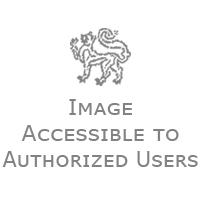Img. ID: 25016

Name/Title
Torah shield donated by Zelke von Lämel | Unknown
Object
Object Detail
Hallmark
Settings
Unknown
Date
1763 (inscription), 1826 (inscription)
Synagogue active dates
Reconstruction dates
Artist/ Maker
Unknown (Unknown)
Origin
Historical Origin
Unknown
Community type
Congregation
Location
Unknown |
Site
Unknown
School/Style
Unknown|
Period Detail
Collection
Documentation / Research project
Unknown
Category
Material / Technique
Silver, gilded
Structure: hammered, cut
Decoration: chased, cast, engraved
Bonding: soldered, screwed
Inscription: engraved
Structure: hammered, cut
Decoration: chased, cast, engraved
Bonding: soldered, screwed
Inscription: engraved
Material Stucture
hammered, cut
Material Decoration
chased, cast, engraved
Material Bonding
soldered, screwed
Material Inscription
engraved
Material Additions
Material Cloth
Material Lining
Tesserae Arrangement
Density
Colors
Construction material
Measurements
Height
350 mm
Length
Width
290 mm
Depth
Circumference
Thickness
Diameter
Weight
Axis
Panel Measurements
Subject
Unknown |
Condition
Intact.
Extant
Documented by CJA
Surveyed by CJA
Present Usage
Present Usage Details
Condition of Building Fabric
Architectural Significance type
Historical significance: Event/Period
Historical significance: Collective Memory/Folklore
Historical significance: Person
Architectural Significance: Style
Architectural Significance: Artistic Decoration
Urban significance
Significance Rating
Textual Content
Unknown |
Languages of inscription
Unknown
Shape / Form
Unknown
0
Ornamentation
Custom
Contents
Codicology
Scribes
Script
Number of Lines
Ruling
Pricking
Quires
Catchwords
Hebrew Numeration
Blank Leaves
Direction/Location
Façade (main)
Endivances
Location of Torah Ark
Location of Apse
Location of Niche
Location of Reader's Desk
Location of Platform
Temp: Architecture Axis
Arrangement of Seats
Location of Women's Section
Direction Prayer
Direction Toward Jerusalem
Coin
Coin Series
Coin Ruler
Coin Year
Denomination
Signature
Colophon
Scribal Notes
Watermark
Hallmark
There are three Hallmarks on the object:1. The hallmark depicts an animal (duck) in a shield. This is an unidentified hallmark. 2. The combined letters T and F in a round frame. This is an Austro Hungarian tax mark for small items used 1810-1824. cf.
Divis, p.95 #560. 3. The letter N in a round frame, this is the city mark for Nuremberg used 1700-1750. cf.Divis, p.79 #400 .
Divis, p.95 #560. 3. The letter N in a round frame, this is the city mark for Nuremberg used 1700-1750. cf.Divis, p.79 #400 .
Group
Group
Group
Group
Group
Trade Mark
Binding
Decoration Program
Summary and Remarks
Zelke (known as Simon; 1776 - 1845) who renovated the shield and re-donated it to the synagogue was born in Toschco, a town in Bohemia, under Austrian rule. As customary at the time, he was named Toschco, after his place of origin. Toschco was a wool merchant dealing with the wool industry in Bohemia and Austria. During the war against Napoleon Bonaparte (December 1805), he assisted the Austrian Royal Treasury and contributed money to fund the war. In gratitude for his act, he was honored by the Emperor and was awarded the title of nobility: Edler von Lämel (in German), and which permitted him to possess a family coat of arms, as stated in the dedicatory inscription. The title Lämel refers to his father's name, who probably was also dealing with wool.
In 1856, Eliza Hertz, the daughter of the Edler von Lämel contributed money to build a school in Jerusalem, to educate Jewish orphans according to a new German innovative schooling system. She named the school Lämel, after her father's name. Ludwig August Frankal-Hochwart, was appointed, on behalf of Eliza, to supervise the curriculum and to direct the school, when time comes. Like her father, Frankal was also honoured by the Emperor, Franz the 1st and was awarded a knighthood title of Ritter von Frankal, for the publication of a patriotic book of poems: "The Poem of the Hubsburg Family."
The building was designed by the German Architect Theodor Sandler. He was probably acquainted with the clock which adorns the Alt-neu synagogue in Prague, and he decorated the school façade with a similar clock, with Hebrew letters, instead of ciphers.
The school was the first to teach different subjects in Hebrew and was considered by the Ashkenazi highly orthodox community in Jerusalem as a school of the Enlightenment movement. Thus, they opposed any of its activities and acted against it. However, the school gained the support of the Sephardi community in Jerusalem and till the 1880's, Ladino (Judeo Spanish) was considered its first language. During the British Mandate, the school became a public school and today it is a Talmud Torah, used by the Orthodox Jewish population.
Remarks
Suggested Reconsdivuction
History/Provenance
According to the Museum card, the shield was in use in the Maisels synagogue in Prague. It reached the Jewish Museum of Prague during WWII and was recorded then by Dr. K. and Dr. E.
Main Surveys & Excavations
Bibliography
Friedlander, Mordechai, Zvi. Shir Mizmor Likhvod ha-keisar (a hymn for the Emperor Franz Song). Vienna: Friedrich Forester, 1860. In Hebrew.
Kroyanker, David. Jerusalem Architecture – Periods and Styles, Jewish Neighborhoods and Public Buildings Outside the City Walls. Israel: Keter Publishing House, 1991. In Hebrew.
Reitzner, Viktor. Alt Wein Lexikon fur Osterr u. Suddeutsches Kunstgewerbe, Wien, 1952.
Short Name
Full Name
Volume
Page
Type
Documenter
Michael Tal | 03. 93
Author of description
Ariella Amar | 06. 97
Architectural Drawings
|
Computer Reconstruction
|
Section Head
Ariella Amar | 06. 07
Language Editor
Judith Cardozo | 07.07
Donor
UNESCO |
Object Copyright
Jewish Museum in Prague (JMP)
Negative/Photo. No.



